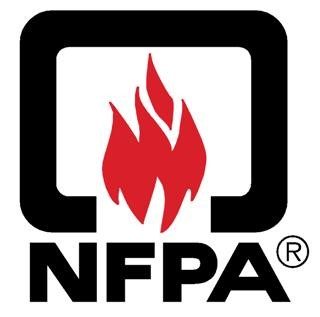 The initial issue of NFPA 652, Standard on the Fundamentals of Combustible Dust, was issued in September 2015. OSHA uses the NFPA standards as the basis for enforcement in managing combustible dust hazards. Are you on track for compliance with the standards?
The initial issue of NFPA 652, Standard on the Fundamentals of Combustible Dust, was issued in September 2015. OSHA uses the NFPA standards as the basis for enforcement in managing combustible dust hazards. Are you on track for compliance with the standards?
The new standard provides the basic principles of and requirements for identifying and managing the fire and explosion hazards of combustible dusts and particulate solids. Of notable interest is Chapter 7 which introduces the Dust Hazard Analysis (DHA). The DHA is different from other forms of risk assessments such as a Process Hazard Analysis (PHA) as it has narrower requirements of specifically assessing dust hazards. The requirement is retroactive and the new standard does not allow the absence of previous incidents as a basis for deeming a particulate to not be combustible or explosible.
PROCESS can provide clients with a review of their existing particulate solid handling systems to develop a plan for bringing them into compliance with the NFPA 652/654 standards. Such services often involve the following tasks:
A. Site Visit
- Visit each facility to review the existing unit operations, gather technical data, meet with Operations personnel, and review system operating procedures and Process Hazards Analyses (PHA).
B. Evaluation Basis Preparation / Hazards Assessment
- Detail the basis of design/evaluation for the equipment/system handling the particulate solid
- Determine if there is sufficient information to document that the particulate solid is a combustible dust and if the particular equipment involved poses a dust explosion hazard. If applicable, define additional laboratory or field testing requirements to complete this effort (e.g. physical properties, flows, concentrations, etc.).
C. Dust Hazards technical evaluation
- Conduct a systematic review of existing dust hazards. The review will consider all phases of operation; Normal, Startup, Shutdown.
- Work with the client to rank the degree of hazards for each area so that a strategic plan can be developed for more detailed qualitative evaluations.
D. Dust Hazards Risk assessment
- For selected areas, facilitate and participate in a detailed Risk Assessment (similar to a PHA) to qualitatively determine the scope of the hazard and define the necessary steps and/or modifications required to comply with the NFPA standards.
- Preparation of a formal risk assessment report that includes an explanation of methodology used, a description of a basis for the recommendations, and an appendix that includes a Risk Assessment Summary Table and/or worksheets.
E. Additional services
- Identification of Technical Alternatives for System Upgrades with a list of design, physical installation, and operational modifications that could be implemented to meet the new/updated standards.
- Capital Cost Estimate for proposed modifications for planning purposes.
